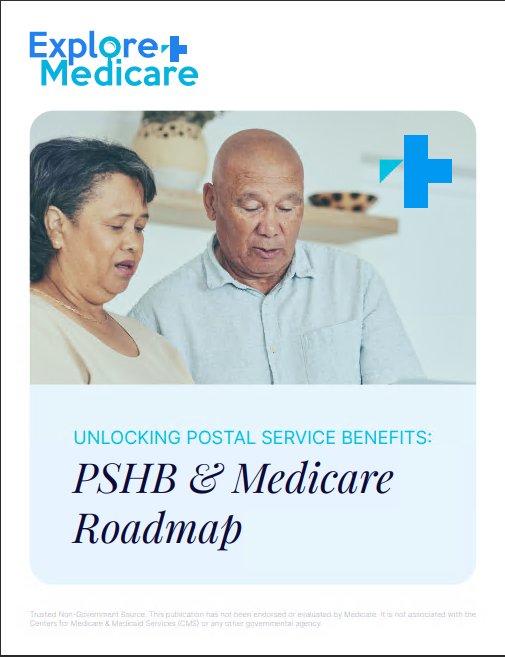Key Takeaways
-
Medicare Supplement plans help cover out-of-pocket costs, but prices vary based on multiple factors. Shopping around is essential to finding the best value.
-
Understanding coverage options, cost differences, and timing considerations ensures you make an informed decision that fits your healthcare needs and budget.
Finding the Right Medicare Supplement Plan for Your Budget
Medicare Supplement plans, also known as Medigap, help cover healthcare costs like copayments, coinsurance, and deductibles. These plans can provide peace of mind, but finding the right one means comparing coverage and costs carefully. Since prices vary, shopping around ensures you get the most value without overpaying.
Understanding What Medicare Supplement Plans Cover
Medigap policies are designed to fill the gaps in Original Medicare, meaning they can help cover expenses that Medicare Part A and Part B don’t fully pay for. Depending on the plan, this could include:
-
Hospital and skilled nursing facility coinsurance
-
Part A and Part B deductibles
-
Foreign travel emergency care
-
Additional out-of-pocket costs not covered by Original Medicare
Medicare Supplement plans work alongside Original Medicare and cannot be used with Medicare Advantage plans. Each plan offers standardized benefits, meaning the coverage remains the same no matter where you purchase it, but costs differ depending on factors like location, age, and insurer pricing.
Factors That Affect Medicare Supplement Plan Prices
Shopping around for the best Medigap policy involves comparing not only coverage but also pricing. Several factors influence how much you’ll pay, including:
1. The Type of Pricing Method Used
Medicare Supplement plans use three different pricing methods:
-
Community-rated: Everyone pays the same premium regardless of age.
-
Issue-age-rated: Your premium is based on the age you are when you buy the plan. The younger you are, the lower your premium remains.
-
Attained-age-rated: Your premium increases as you get older. While it may start lower, costs rise over time.
Understanding how each pricing method impacts your long-term costs helps you avoid unexpected price hikes.
2. Your Location
Medigap prices vary by state and even by region. Certain areas have higher healthcare costs, affecting plan pricing. Comparing rates in your local area helps you gauge the average price range and spot better deals.
3. Enrollment Timing
The best time to enroll in a Medigap plan is during your Medigap Open Enrollment Period—a six-month window that starts when you turn 65 and are enrolled in Medicare Part B. During this time:
-
You have guaranteed issue rights, meaning you can purchase any plan available in your area without being denied or charged higher premiums due to health conditions.
-
Once this period ends, you may face medical underwriting, which could lead to higher costs or denial of coverage.
If you missed your open enrollment window, you can still apply, but insurers may charge you more based on your health status.
4. Additional Benefits and Discounts
Some Medigap insurers offer discounts for non-smokers, couples, or those who pay annually instead of monthly. While the base plan benefits are standardized, added perks can impact your total cost.
How to Compare Medicare Supplement Plans
When shopping for the right Medigap plan, take these steps to ensure you find one that meets your needs and budget.
Step 1: Determine Your Coverage Needs
Before comparing prices, assess what coverage gaps you need to fill. If you travel frequently, a plan that covers foreign emergencies may be essential. If you need help with Part B excess charges, look for plans that offer that benefit.
Step 2: Compare Costs and Pricing Models
Request quotes for different plans in your area and note whether they use community-rated, issue-age-rated, or attained-age-rated pricing. This helps you understand not just the current premium but how it might change over time.
Step 3: Check Insurance Company Ratings and Reviews
While all Medigap plans with the same letter offer identical benefits, customer service, claim processing, and price stability can vary. Look for insurers with strong financial ratings and positive customer feedback.
Step 4: Ask About Discounts and Added Perks
Some companies offer perks such as fitness programs, vision discounts, or wellness resources. While these extras shouldn’t be the main factor in your decision, they can add value.
Step 5: Enroll at the Right Time
To avoid higher costs, enroll during your Medigap Open Enrollment Period. If you’re applying later, be prepared for potential underwriting and rate differences.
Avoiding Common Pitfalls When Shopping for a Medigap Plan
Finding the right plan takes careful research. Avoid these common mistakes to ensure you make an informed choice:
-
Only focusing on the lowest premium: Plans with lower initial premiums may use attained-age pricing, meaning costs will rise as you age.
-
Missing your open enrollment window: If you wait too long, you could face medical underwriting and higher rates.
-
Not understanding the difference between Medigap and Medicare Advantage: Medigap supplements Original Medicare, while Medicare Advantage is an alternative plan with different rules.
-
Ignoring rate trends in your area: Some states have more stable pricing than others. Research historical trends to avoid unexpected rate hikes.
Making the Most of Your Medicare Supplement Coverage
Once you’ve chosen a plan, you can maximize its benefits by:
-
Understanding what’s covered: Know your out-of-pocket responsibilities to avoid surprises.
-
Staying within Medicare’s network: Medigap works with any provider that accepts Medicare, but knowing provider policies helps ensure seamless billing.
-
Reviewing your plan annually: Even though Medigap benefits don’t change, premium increases might make switching plans a better option.
Taking the Next Steps Toward Finding Your Ideal Plan
Shopping for a Medicare Supplement plan requires careful comparison, but taking the time to research options ensures you find one that meets your needs without unnecessary costs. By understanding pricing models, comparing plans based on coverage, and enrolling at the right time, you can secure a Medigap policy that provides long-term peace of mind.









